 Loading...
Loading...-
Building EU Resilience Through Strategic Complementarities
As significant global players in the semiconductor industry, Malaysia and Taiwan are connected by a high degree of economic complementarity. They both rely on a complex supply chain, in which Europe has an important role to play. While still catching up in the chip industry, the EU must project itself as a stable, innovation-driven, and value-aligned semiconductor partner to Malaysia and Taiwan. Driven by a shared interest to boost resilience, the EU and member states must invest strategically in regional dynamics in ASEAN, capitalise on trends shaping the global semiconductor arena, and understand Taiwan’s crucial role in securing resilient supply chains.
Asia Economy Industry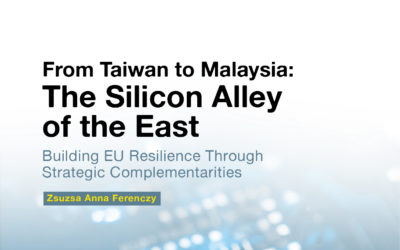
From Taiwan to Malaysia: The Silicon Alley of the East
Other
31 Aug 2025
-
The phrase ‘Whatever it takes’ made Mario Draghi world-famous. Everybody speculating against the European currency knew from that moment onwards that, confronted with the overwhelming firepower of the European Central Bank, you could only lose money. That speech effectively ended the ‘euro crisis’.
Can he do it again?
The Draghi report requested by the European Commission on how to strengthen European competitiveness throws a big stone into the water. It will be the point of reference for both political debate and action over the current five-year legislature. Draghi makes everybody face their responsibilities. And he makes the consequences of non-action extremely clear: in the absence of decisive action, we will no longer be able to reach all our strategic targets. We will have to choose.
The essentials
The Draghi report comprises six basic truths that will inspire the legislative proposals of the European Commission in this term, even more so as it was requested by the European Commission President herself. As I read it, the Draghi report can be understood, in a nutshell, as follows:
1. Investment is the precondition for future growth. Europe is lagging behind in high-tech investment and has largely lost the new digital economy race. This can be identified as the key reason for the difference in per-capita growth between the US and the EU. Midtech– based industry—for example, the auto industry—is our current economic backbone, and it is coming under increasing competitive pressure from China.
2. Without that investment, annual productivity growth is falling behind. Europe could maintain and develop its standard of living significantly by considerably increasing female and older-age participation in the workplace. Worsening demographics make that quantitative input increase more difficult.
3. The EU has to return to the strategy of scaling through the development of its own internal market, especially in the less integrated areas of the service sector.
4. The Banking Union and Capital Markets Union are critical to high-tech investors’ efforts to scale beyond national boundaries. Given that high-tech means not only high return but also high risk, venture capital is necessary for that growth.
5. As is typical for aging societies, we have regulated for risk and not for opportunity. The regulatory burden has to be reduced.
6. Common public debt has to come in as a residual answer, dependent in volume on progress being made in the five points mentioned above. Consensus on common European debt could be achieved in the area of defence, which can be considered a European public good. A common European financing will also contribute to a more equal burden-sharing.
EU Member States Industry Macroeconomics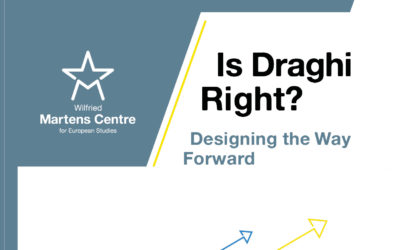
Is Draghi Right? Designing the Way Forward
Other
20 Aug 2025
-
For many years, Italy has been under pressure to increase its meagre defence spending and meet NATO defence spending targets. The EU and US have been pushing the country especially hard after the outbreak of the Ukraine-Russia war.
According to NATO figures, in 2024, Italian military spending stood at only 1.57 per cent of GDP, approximately €35 billion per year. Last April, Minister of Economy Giancarlo Giorgetti announced that spending would rise to 2% of GDP in 2025, following a review conducted according to NATO accounting methodology. To reach the new NATO spending target of 5%, Italy will have to exert a significantly stronger effort, almost tripling the current figure, gradually bringing it above € 100 billion per year. This means the country will have to find an additional € 6-7 billion each year, for an overall commitment estimated at around € 700 billion over ten years, according to calculations by the independent Observatory on Italian military spending: this is around € 220 billion more than what would be spent over ten years if the aim was to reach 2.0 percent in ‘core’ military spending. Even with the flexibility granted by NATO regarding timing, the effort remains impressive for a country struggling with its notorious problems of high public debt.
At The Hague NATO Summit, Prime Minister Giorgia Meloni positively commented on the commitment to increasing spending on defence and security up to 5% of GDP by 2035, labelling the choice as ‘sustainable for Italy’. The ten-year commitment must be renegotiated in 2029, as there are no mandatory annual increases for the allies, allowing choices to be made based on the economy’s progress. The Premier also excluded for 2026 the willingness of her government to activate the SGP’s ‘safeguard clause’, which has already been activated by twelve EU countries, including Germany, to enjoy an additional budgetary space of up to 1.5% of GDP.
The Prime Minister’s goal is to broaden the scope and the definition of ‘defence’. This must include, in her view, not only military spending but also the defence of borders, irregular migration, critical infrastructures, military mobility, infrastructures in the most general sense, artificial intelligence, research, and technological innovation. Many of these items have strong reflexes on Italian businesses.
More generally, the increase in defence spending presents a significant business opportunity for Italian companies, as a substantial portion of these resources will be allocated to strengthening Italian businesses, fostering an expansionary economic policy that will generate new resources, paving the way for a virtuous circle. It could also be a unique opportunity to convert and reshore some struggling businesses, such as the automotive industry.
The major challenge to address is the ability of Italian companies to respond readily and effectively. In this perspective, the leading business community Confindustria is already strengthening its defence business and research units to be prepared for the increase in forecasted investment. Furthermore, the three largest business communities in the EU (Confindustria, Germany’s BDE, and France’s MEDEF) are discussing the possibility of developing joint defence projects, exploiting the €150 billion of the EU’s SAFE fund. Among other things, this is an ideal opportunity to review EU procurement legislation to simplify and speed up procedures, and quickly launch tenders involving companies from different member states, thereby reducing defence-related imports from the US within a short period. It is also a unique opportunity for the creation of European defence champions, through the scaling up of activities of large companies already operating on the market or by creating larger companies through mergers and acquisitions (M&A) operations. The EU defence industry currently suffers from sub-optimality problems, meaning that many activities and services are duplicated because they are still carried out at a national level, which is a waste of financial resources and a great source of inefficiency. From this perspective, the introduction of EU-level tax breaks to encourage mergers and acquisitions of transnational companies would be welcomed.
From a technological development perspective, Italy is actively involved in the Global Combat Air Programme (GCAP), a trilateral project with the UK and Japan to develop a next-generation fighter jet. The country is also focusing on strengthening its aerospace industry, particularly in satellite development, to reduce operational times and consolidate its competitive advantage in the domain of space. Italy’s defence industry possesses strong dual-use capabilities, as its technologies can be applied to both military and civilian purposes. Given that the Italian economy is notoriously characterised by a network of SMEs, this ecosystem seems to be particularly suited to supporting the European defence industry develop technologies and weapons that do not require huge investments typical of heavy armaments, such as drones, a sector in which Italy is recognised for its world-class excellence.
As the recent war between Israel and Iran demonstrated, modern wars are increasingly fought in the air than on land. Missiles, fighter jets, and drones now play the lion’s share, to the detriment of tanks and ground forces. Furthermore, modern wars are increasingly fought using information technology, including cyberattacks, the dissemination of fake news, and the theft of sensitive data. From this perspective, Meloni’s suggestion to expand the scope of the defence business seems reasonable. This is why the EU should focus on strengthening these sectors as well.
Perhaps for the first time in the history of the EU, one truly gets the impression that the member countries, starting with major founding nations, intend to get serious about the creation of a common defence and a single army. The business world is ready to accept the challenge. Public and private financial resources are already available. Now it’s up to European leaders to make the next move, providing guidance to the defence industry on what kind of common defence to invest in. Italy’s industry will be ready.
Emanuele Canegrati Defence Industry NATO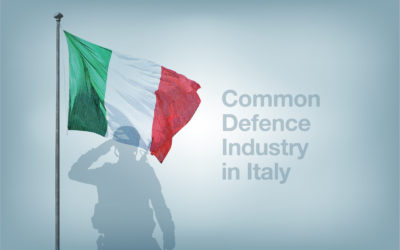

Emanuele Canegrati
The Ongoing Debate Over a Common Defence Industry in Italy
Blog
24 Jul 2025
-
The announcement of the provisional agreement to establish the first comprehensive regulatory framework on AI by the European Union marks a historic development. At a time when even the creators of technological innovation publicly express concerns about the potential for unchecked dominance of machines over humans, Europe is taking a leading initiative. It aims to impose fundamental principles and values on the technological development of the 4th Industrial Revolution.
The agreement aims to ensure that AI is utilised in a transparent, fair, safe, and environmentally friendly manner without limiting possibilities and opportunities for European AI-related start-ups. Among other provisions, it guarantees that AI-generated content will always be labelled as such, and AI systems interacting with humans will be required to inform the user that they are in contact with a machine. Human control systems for machines and the installation of risk management systems are also foreseen.
Simultaneously, a distinction is made between systems classified as ‘high-risk,’ such as those used in sensitive areas like critical infrastructure, training, human resources, and public order. Particularly in the latter category, the use of remote biometric identification systems in public places is restricted to avoid mass surveillance of populations. The text goes beyond theoretical considerations and establishes a necessary control mechanism—the European AI Office, which will coordinate compliance and enforcement, having the authority to impose significant financial penalties.
Despite reservations expressed about the potential impact on Europe’s technological competitiveness, a balanced approach has been taken to ensure that research is not restricted while implementing strict regulations, mainly on large-scale applications. In this framework, the technology market itself acknowledges that the new legislation leaves companies room for manoeuvre, despite the restrictions.
While Europe may not be in a position to take the technological lead in the development of the 4th Industrial Revolution, it has demonstrated its ability to use its organised market and institutions to regulate an environment which risks becoming chaotic.
Let us make no mistake: technology will always advance faster than bureaucratic negotiations of regulations.
Within four months, we transitioned from ChatGPT 3 to ChatGPT 4, representing a shift from a system with 175 billion parameters to one with a trillion parameters.
The time it took for ChatGPT to ‘reinvent’ itself was not enough to pass the regulation from the European Parliament to the Council, a distance of less than one kilometre in the heart of Brussels. Considering that the text was initially presented in 2021 and the regulation is not expected to take effect before 2025, the significant difference in the reaction reflexes becomes understandable. Nonetheless, the importance of the European decision remains substantial. The EU is the first international entity to successfully impose regulatory rules on the development of artificial intelligence, establishing crucial parameters of transparency, accountability, and control, while making the technology more human-centred.
Europe has proven itself to be the most sensitive international actor in protecting human rights and upholding fundamental principles and values. It is now laying the foundation for further development of a stronger international regulatory framework, providing a model that could be adopted more widely with country-specific adaptations. Additionally, the rules are likely to be applied outside the EU for platform functionality reasons.
It also paves the way for a similar intervention at the level of International Law, which would have been imperative had the EU not taken action, given that the UN recently seems to have sunk into a quagmire of inefficiency and mere observation of major international developments.
In any case, the EU appears to have learned a crucial lesson from the uncontrolled growth of technological giants. It has taken steps to address this issue belatedly, as these wholly unregulated platforms became available for the dissemination of fake news and hate speech, resulting in profound social and political consequences. That is why the EU’s regulatory intervention on AI, following the Digital Service Act and other related legislation, is a step of historic importance, no matter how modest it may appear today.
Panagiotis Kakolyris AI Industry Values

Panagiotis Kakolyris
AI Act: A Historic Victory for European Values
Blog
21 Dec 2023
-
In the year 2000, the European Union (EU) stood as the largest economic entity on the planet. At the European Council summit in March of that year, its leaders set the objective of the EU becoming “the most competitive and dynamic knowledge-based economy in the world, capable of sustainable economic growth with more and better jobs and greater social cohesion”.
Alas, little more than two decades later, Europe is paralysed by a fear of falling further behind the United States and China. From chips to semiconductors; from wind turbines to electric cars – the EU is gripped by a foreboding sense of managed decline.
But it wasn’t always like this.
At the turn of the millennium, the EU’s Lisbon Agenda sought inspiration from a robust US economy, and envisioned the EU surpassing it in economic growth. The strategy revolved around further integration, emphasising the single market and digitalisation to fuel growth.
Unfortunately, for over twenty years, the EU has neglected this competitiveness-centred approach. And this neglect will haunt Europe in the 2024 elections.
Because, on the other side of the Atlantic, the United States surged ahead, embracing a market-based economy with a unified internal and capital market. Productive US knowledge-intensive companies expanded globally, while Europe’s share of world GDP dwindled, and its innovation support proved more expensive and less effective.
And while Europe stagnated, China built an entire high speed rail network and assumed leadership in many emerging technologies.
The regrets in Europe are already profound.
The truth is that the EU’s commitment to competitiveness never recovered from the global economic and financial crisis which started in 2007. While the United States managed a relatively swift recovery, the EU faced a more prolonged and challenging recovery period.
Unfinished governance structures in the Eurozone were compounded by political divisions and an uneven common monetary policy. These crises tested the EU’s economic structures repeatedly, leading to a reassessment of its policies and priorities.
While the US viewed the crises as a temporary setback, Europe perceived them as a failure of the free market.
And this spelled the end of any meaningful attempt to place competitiveness at the core of EU policy.
This difference in interpretation influenced the language used in the EU, shifting away from pro-market solutions to emphasising the role of government and public investment in preventing economic collapse.
This change in economic language also reflected a shift in priorities. Concepts such as the Lisbon Strategy, entrepreneurship, and innovation received less emphasis (and less votes). Economic growth was no longer the sole priority.
Protection overrode progress as Europe turned more insular, and less able to cope with a fraying consensus on trade and globalisation.
Today, the single market faces even more fundamental challenges.
The EU’s largest member states – France and Germany – continue to deviate from traditional EU principles with a renewed attachment to protectionism and subsidies to “safeguard” domestic (often heavy or fossil fuel intensive) businesses. Paris and Berlin accounted for 77% – or 672 billion euros – of approved State Aid in the EU in 2022 alone.
This shift impedes the growth of new enterprises, creating a hurdle for innovation while weakening those EU member states without such financial resources.
In contrast, the United States implemented measures emphasising market-based and renewable subsidies.
As the EU approaches the parliamentary elections of 2024, a study by the Martens Centre across all 27 EU member states reveals citizens’ increasing concern about their economic security. Families are grappling with uncertainty about their future. A substantial portion of the population feels financially strained, highlighting the urgency of prioritising economic growth and increasing employment.
Even issues like security and the war in Ukraine, significant in Martens Centre polling, are seen through the prism of their economic impact. Energy prices and the cost of living remain tangible concerns for European citizens. Even more troubling is that there is a growing reluctance among the population to make trade-offs between economic costs and the green transition.
Most people want to go “Green”, but very few are willing to pay extra for it. Yet, for a successful transition to sustainability, economic growth is essential – as are the increased tax revenues that follow more jobs and less unemployment.
But being serious about rebuilding competitiveness requires more than the usual soundbites about completing the Single Market and the repeated (and unfulfilled) commitments to completing Banking Union, Capital Markets Union, and countless other initiatives.
Rather, governments must remember that the EU’s prosperity is based on an internal market of over 400 million consumers. And that a multitude of obstacles still exist that impede capital flows, reduce cross-border investment and which often make it impossible for people to work, trade or live around the EU.
Competitiveness is not a dirty word. It’s actually the essential basis of Europe’s future.
The EU’s geopolitical aspirations can wait.
Because what Europe really needs is higher economic growth, more jobs and a return to placing the Single Market at the core of EU policy. The EU’s neglect of competitiveness may well result in decades of avoidable regret.
Tomi Huhtanen Eoin Drea Economy Elections Industry

Tomi Huhtanen

Eoin Drea
20 Years of Neglect and Regret: Why Competitiveness Will Haunt Europe in the 2024 Elections
Blog
13 Dec 2023
-
In furtherance of this research project, Garvan Walshe developed a mathematical model for estimating the changes in European defence equipment budgets that would be required to meet the Russian threat. It can be accessed for free by clicking here.
The Russian state is a threat to freedom in Europe and the integrity of the EU. Since 1945 we have relied on the United States to protect freedom on our continent. While it is to be hoped the US will be able to stay involved in the most successful democratic alliance in history, the risk of conflict in Asia, a return to isolationism, or the re-election of Donald Trump is too high for the EU not to develop a defence industrial and technological base (DITB) able to supply Europe’s defence on its own. Such a renewed DITB will furthermore be able to contribute to the collective defence of democracy across the globe and support our friends and allies in the United States and democratic Asia. In the worst case it will allow Europe to defend itself from Russian aggression alone. In the best circumstances it will strengthen the international community of democracies.
This paper finds that developing such capability is well within the capacity of the EU and its member states and proposes a series of measures by which it can be financed. It analyses the composition of the defence budgets of EDA members between 2017 and 2021, and assesses their levels of defence investment, research and development, and “research and technology” (R&T – fundamental technological research that is itself an input to R&D). It identifies gaps and recommends EU policies and instruments to close them.
Defence European Union Foreign Policy Industry
Freedom Must Be Better Armed Than Tyranny: Boosting Research and Industrial Capacity for European Defence
Policy Briefs
30 Nov 2023
-
The recent launch of the European Commission’s Green Deal Industrial Strategy was supposed to set the “framework for the transformation of the EU’s industry for the net-zero age”. Unfortunately, it’s now viewed as a panicked reaction to the Biden administrations Inflation Reduction Act (IRA) in the United States.
While the American legislation will increase the attractiveness of the US as a “green” investment location – a move which is positive for global efforts to combat climate change – it will not automatically result in a flight of capital and employment across the Atlantic. Rather, there is a real possibility that the hurried implementation of Brussels’ current proposals may, unintentionally, undermine the European Single Market, increase friction between member states and ultimately weaken the Transatlantic economic relationship.
Politically, the Industrial Strategy proposals cannot be considered in isolation. They are closely linked to a whole array of interlinked proposals regarding Trade Policy, State Aid Rules, the Competitiveness Agenda and Education to name but a few. They also form part of a significantly wider debate about the future direction of the EU itself. In this context, increased protectionism, supporting national champions and more EU-level borrowing represents a more statist, more centralised vision of European integration. A vision which challenges the Single Market underpinnings which have formed the basis of Europe’s decades-long economic expansion.
Economy European Union Industry Transatlantic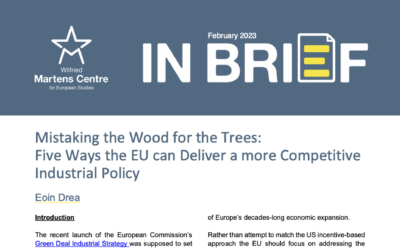
Mistaking the Wood for the Trees: Five Ways the EU can Deliver a more Competitive Industrial Policy
IN BRIEF
13 Feb 2023
-
Regulating autonomous vehicles is not only a question of finding solutions in connection with the technical aspects of the legal framework. Rather, it involves making preliminary policy-based decisions that take all stakeholders into consideration. This article makes the case that efforts must focus on how to incentivise the use of autonomous vehicles without putting the burden on the shoulders of those who will ultimately make use of them. In that respect, the existing regulation (implemented on the basis of the Product Liability Directive and the Motor Insurance Directive) is insufficient, as there is a considerable mismatch between the current framework and the challenges posed by autonomous vehicles. There is a need to act urgently on the regulatory level.
Read the full article of the June 2020 issue of the European View, the Martens Centre policy journal.
Anastas Punev Industry Innovation Technology

Anastas Punev
Autonomous Vehicles: The Need for a Separate European Legal Framework
Blog
18 Sep 2020
-
During the last decade of perma-crisis in Europe, we started to believe in our own impending demise. Suddenly there was money for nothing, China was chomping at our heels and our demographics were catastrophic. All that was left was a long, slow inevitable decline into global insignificance. Fast forward to 2019 and a similar vista appears, this time with the added bonus of catastrophic climate change. Now Europe teeters on the brink of another economic downturn.
These challenges, while serious and real, can be addressed by a long-term policy reorientation. But to adequately respond to the issue of climate change and to effectively project European interests on a global stage Europe must combat the one issue which is its biggest impediment. Europe needs to remember that thinking big isn’t a crime. Europe needs to understand that investing for the long term is a vital part of economic planning.
Take the environment. The airline industry is one of the largest sources of global Co2 emissions. Yet, notwithstanding the relative proximity of many of Europe’s main urban centres, high-speed rail in Europe remains “an ineffective patchwork of lines without a realistic long-term plan”. EU funding of 23.7 billion euro in co-funding for high-speed lines since 2000 is minuscule when compared to support levels for other transport modes. At a European level, the overall picture remains one of isolated national systems and incomplete domestic programmes.
Yet, the environmental benefits of high-speed rail are obvious. The development of high-speed networks in France, and more recently in Italy and Spain, have significantly reduced domestic air travel and resulted in reliable transport links between many major cities. Cross-border services – most notably the Eurostar connecting London to Paris/Brussels and Thalys linking Paris to Amsterdam (via Brussels) have become important transport arteries.
So why then the implied reluctance – at both a national and European level – to place high-speed rail at the centre of the EU response to fighting climate change? One reason is the economics of high-speed rail. Such developments are, by their very nature, expensive to construct, the time taken for such lines to become operational can be substantial (often a decade or more) and during this time they are constantly being subjected to negative media and economic analyses.
China built a comprehensive high-speed rail network in little more than a decade.
Consider both the proposed Lyon-Turin and London-Birmingham (HS2) rail links. The considerable opprobrium heaped on these projects relates mostly to cost. Unrealistic initial budgets (often required to gain political support for commencement) are used by opponents as an economic basis for seeking to halt the project. But cost-benefit analyses are, by their very nature, only based on a set of quantitative assumptions regarding issues such as construction costs and passenger numbers.
The traditional economic analysis ignores wider societal and environmental benefits. In addition, both of these projects also seek to achieve important strategic economic objectives in terms of improving cross border mobility (Lyon-Turin) and tacking increasing regional inequalities (London-Birmingham).
Often expensive (and they are very expensive) high-speed rail projects find it difficult to attract consistent political support. Welded to an election cycle governments find it difficult to coherently develop plans for high-speed rail lines that may take decades to become fully operational. This equates, in many politicians eyes, to decades of considerable government spending without any discernible impact on their re-election prospects.
China built a comprehensive high-speed rail network in little more than a decade. In Europe, proposals for new, or even for upgraded lines, can languish for decades in planning hell.
To counter this reality, the EU should be the perfect mechanism for ensuring consistent financial support for these long term investment projects. The EU should significantly increase co-funding for an earmarked list of strategic priority projects. For example, the approximate 500km distance between Berlin and Munich still takes a minimum of 4 hours to complete by rail.
Likewise, the 400km trip between Brussels and Frankfurt requires a journey time in excess of 3 hours. These train journey times are not sufficient to alter many passengers travel habits regarding short-hop airline flights. Up to 8-10 flights still leave Brussels for Frankfurt (and vice versa) on a daily basis.
Given the current climate crisis, and Europe’s wish to lead the response, this situation is clearly unsustainable. Tackling climate change is a very expensive business. Europe needs to hop aboard this high-speed train before it leaves the station.
Eoin Drea Economy Energy EU Member States Industry Sustainability

Eoin Drea
To tackle climate change Europe needs to embrace high-speed rail
Blog
02 Sep 2019
-
“Pleased to make your acquaintance,” European Commission Vice President Jyrki Katainen meets 3D-printed life-sized robot InMoov at Makerstown.
Held on 24 May 2016 at the Square Meeting Centre, Makerstown was the first event of its kind in Brussels. It brought to the European capital 50 young and innovative Makers — a new generation of entrepreneurs and DIY experts empowered by Web 3.0 tools, technology and crowdfunding. From 3D printing to robotics, wearable technology to new ICT and food to fashion, the Makers selected from all over Europe might just be tomorrow’s Robert Bosch, Enzo Ferrari or Arthur Guinness.
Part fair, part conference, Makerstown was organised by the Wilfried Martens Centre for European Studies, the official think tank of the European People’s Party, and by Think Young, the first think tank to lobby for young people.
Speakers included Jyrki Katainen, vice president of the European Commission responsible for Jobs, Growth, Investment and Competitiveness; and Carlos Moedas, European Commissioner responsible for Research, Science and Innovation, as well as members of the European Parliament and business leaders. Industry 4.0, public and private finance for entrepreneurs, women’s entrepreneurship, start-ups and scale-ups were the order of the day.
Makerstown takeaways:
1. Ideas are assets. Makers are leading the way
Twenty years ago, our biggest challenge was digitalising information. Now we are entering a new era in which the digital world is affecting and transforming the physical world in unpredictable ways. It is the age of the fourth industrial revolution and of the peer-to-peer economy. In this age, innovative Makers at the cutting-edge of the technological frontier are our best hope to revive our ailing economies.
Start-ups in Europe represent only 5 percent of firms, but they already account for a disproportionately high percentage of job creation. This is destined to rise due to the increasing interpenetration between digital and physical world. We must be ready to exploit this opportunity.
2. The three Fs of funding: Friends, family and fools
For innovative start-ups launched by visionary Makers, financing is often the main initial hurdle. In the early stages, often only friends, family and fools will be bold enough to believe in a new idea. In some contexts, public money can partly remedy this shortcoming, and innovative financial instruments have been developed by the European Commission and the European Investment Bank in the last few years.
Such versatile instruments are often not well known by makers and it is important to raise their awareness on this topic. However, public money should be used with great caution, as it can backfire and discourage the investment of private money.
Europe’s real problem today does not seem to be the availability of finance – markets are actually flooded with liquidity – but the lack of an adequate ecosystem. In the U.S., public money is much more limited than in Europe, and yet Silicon Valley is in California, not in Germany or France.
3. We can make it: Female entrepreneurship
Women are an under tapped source of economic growth and innovation. While more than half the European population is female, women represent only a third of the self-employed and 30 percent of start-uppers in the EU. This happens in spite of excellent educational achievements. The EU has traditionally been at the forefront of initiatives promoting gender equality and equal opportunities.
It could potentially do more in the field of education, which is essential in fostering a new mindset that would encourage women to live up to their potential. This needs not come at the expense of maternity and family life: intelligent policies can help women reach a balance between family and career engagements.
4. Creative bravery: Celebrating failure, changing the world
According to Organisation for Economic Co-operation and Development (OECD) figures, 60-70 percent of productivity growth stems from innovation. Taking initiative is therefore essential. Recent years have seen a few success stories of innovation in Europe, for example the Estonian policy of abolishing tax for new companies, arguably one reason why Skype was born in Estonia.
However, some countries are doing better than others and policymakers should be open to bolder initiatives. In the U.S. more universities are introducing commercialisation offices to help students develop their ideas and bring them to the market. The initiative can be valuable for Europe, too.
Other important policy initiatives include increasing personal security on the Internet, strengthening the presence of technology and science in schools and decreasing transportation costs. Why not even allow reformist zeal to carry us away? The introduction of a ‘failure day’ could celebrate entrepreneurial failure and help eliminate the stigma it carries.
5. Ecosystems are essential
Only the right ecosystem can allow entrepreneurial spirit to create start-ups. The first element of a successful ecosystem is a big continental market. Europe has in place all the institutional instruments to create such a market, but national tensions mean services, digital and energy remain closed to competitive pressure.
The second essential element is an environment with few regulations, little bureaucracy and a very high level of flexibility. The EU has not always been up to the task. The EU and its member states should minimise regulation and allow as much innovation as possible. The third element is a mindset open to failure as a stepping stone towards success, and not paralysed by it as a shame to avoid. Although it’s unlikely that a single European Silicon Valley will emerge, we can be optimistic that Europe’s innovative future is bright.
After a day of demos and discussions, everyone who attended the event could agree on at least two things: Europe’s manufacturing tradition IS getting an update, and Makerstown was THE place to experience it first-hand! Breaking free from the confines of a regular EU-bubble conference, it was anything but a talking shop. Instead, it was streets ahead, celebrating European innovation in a dynamic, engaging, and inspiring way. Missed the action this year? No worries, Makerstown 2.0 will be back in town in spring 2017.
Business Economy Industry Innovation Technology
Europe, get ready for the Makers Revolution!
Other News
25 May 2016
-
Technology is, undoubtedly, disrupting the world as we know it at a faster pace than we’ve ever seen before. It is reinventing society in ways we could have hardly imagined just a few years ago.
Technologies such as cloud computing, mobile apps, ecommerce or wireless communication have helped democratize information and give access to knowledge at a larger scale than ever before. We now live in a ‘network society’ always connected, always changing and always redefining itself.
This digital revolution has taken by storm all aspects of our daily lives and the way we work is one of the areas where disruption will be the strongest. It is not only the ‘how we work’ that we need to rethink, but also the ‘when’ and ‘where from’.
Coping with such disruption is already proving to be very challenging across industries, for both employers and employees in the public and private sectors. But it is up to us to face the challenges and make sure that the workplace environment is keeping up with the technology surrounding it, instead of trying to ignore for as long as possible (which, on the long term, would have disastrous consequences).
First of all, I strongly believe that for the world of work to keep the pace with the technological revolution, our paradigm around what work is and how it should happen need to change. For the past 150 years, throughout the industrial revolution and until today, very little has changed in the way we design organisations and jobs.
Just like in Henry Ford’s time, today’s workplaces are following the factorymodel organisational design shaped around structured hierarchy, heavy bureaucracy, overwhelmed by control and rules, adverse to change. As much sense as this model might have made in the industrial era, today it is making less and less sense to apply these same principles to our working environments.
Given the opportunities that technology is providing, it is now the time for us to start rethinking the meaning of work so that we can start redesigning the workplace. Organisations need to become flexible and adaptive in order to survive and because of technology, we now have the opportunity to make it happen.
Less hierarchy, more autonomy, simplifying bureaucracy as much as possible and involving employees more in the decisional process should become the norm of the organisation leading the way forward in any kind of industry or sector.
New models of organisation design such as holocracy, wirerachy, freedom centered or distributed (remote) have challenged the status quo of the world of work. And though none of these models have proven to be perfect, they all have one thing in common: maximising the impact that technology has within the workplace, taking full advantage of how it can help an organisation thrive (and improve the flow of information, communication, learning and development of employees, productivity etc).
In addition, technology is also redefining the physical environment of the workplace. Remote work is becoming more and more the chosen solution, as for an organisation this means lower fixed costs, significantly decreasing commuting times and also being able to tap into a global talent pool without being limited by the physical space to look for the most talented employees living in the proximity of the workplace.
And even for companies for whom remote work is not the solution, the office space is being redefined. It is making its transition from the cubicle to becoming a hub for collaboration where employees can spend time connecting with each other rather than the place where they need to be between 9am and 5pm.
But for all of this, the shift of paradigm needs to happen also as organisations need to drop the idea that efficiency and performance is directly tied with the rules of the physical offices fixed working hours and long commutes. Instead, remote working working organisations and coworking offices rely heavily on collaborative technology and digital tools to help employees thrive in their work.
Secondly, another aspect of the world of work keeping up with technology is the fact that digital workplaces will need digital employees. In other words, emphasis needs also to be put on developing digital literacy both within current generation in the workplace as well as younger generations who will enter the workplace in the upcoming years.
At the moment, there is a high percentage of the workforce (mostly represented by Generation X) across the world with real difficulties in using digital tools within the workplace and this is impacting in a negative way both productivity and the workflow within the organisation.
Developing learning programs that help them gain digital skills will be critical in the next years, as the requirements of the modern workplaces and the transformation of many of today’s jobs could lead to a stron technological unemployment trend which might leave heavy marks on economies and the society.
And even if today’s younger generations have been heavily exposed to technology since very early in their lives and they are true digital natives, they still need training and education about using digital tools purposefully in the workplace. For this, attention needs to be brought to education systems across the world to integrate digital literacy within the curricula of schools as an essential part of the learning process.
At the moment, the gap between skills taught at school and skills required in the workplace is becoming higher and higher and most of it because of this lack of focus on digital literacy.
Last but not least, government policies need to be more open to regulating new ways of work supported by technology. On one hand, it is the rise of the digital nomads and of the remote workers (who are either working on a freelance basis or as part of remote or flexible working companies).
At the moment, it is legally quite difficult for such workers to deal with paying taxes or finding legal ways of justifying their work (since the are huge gaps in legislation related to such regulations of remote or freelance work).
On the other hand, technology offers the opportunity to help close the unemployment gap for vulnerable groups of people (the disabled, the elderly, ethnic discriminated minorities etc). With the help of digital tools, they can be much more easily integrated in the workplace (both on physical or in remote working environments, depending on the needs).
But in order for organisations to create employment opportunities for these vulnerable groups, government policies play an important role in advocating for such approaches, reducing the bureaucracy of these processes and maybe even incentivising organisations for adopting such policies.
To sum up, I believe the impact that technology will have on the workplace will have a massive impact on shaping tomorrow’s society and it is our duty right now to try to foresee the changes coming along in the workplace and the forces driving it so that we can adapt to them in the best possible way.
The Romanian version of this article has been previously published in the Romanian news portal Ziare.com.
Ana Marica Economy Education Industry Innovation
Ana Marica
The Digital Revolution Within the Workplace
Blog
10 May 2016
-
China has paid dearly for its geopolitical rise. The Corona crisis is the latest example of the risks involved with massive investment in the Silk Road. The megaproject, which is also known as the Belt and Road Initiative (BRI), was launched in 2013 to underpin the rapid expansion of China’s economy by outbound investment beyond its own national borders. It encompasses infrastructure investments, development policies, investment and trade relations, and financial cooperation with the BRI partner countries. Moreover, it represents a crucial policy to foster China’s geopolitical rise, i.e., by internationalising China’s financial system and its currency, enabling a strong export-driven economy.
The recent pandemic has caused substantial economic downturn and led to an outflow of capital in many BRI countries. The outbreak adds a new hurdle to the trade and infrastructure programme by prompting delays and disruptions, e.g., through labour shortages caused by quarantine measures. This amplifies risks attached to financing investment projects in less politically and economically stable developing countries. However, not only are many countries caught in a Chinese debt-trap, but China itself needs a strategy for managing non-performing loans amid the crisis. Loan defaults on the Silk Road could jeopardise the Chinese mega-project.
China Globalisation Industry Macroeconomics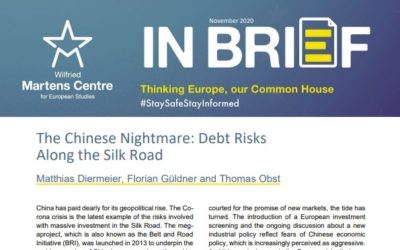
The Chinese Nightmare: Debt Risks Along the Silk Road
IN BRIEF
19 Nov 2020
-
Perhaps, when the history of European integration in the early 21st century is written, 5G will be viewed as the beginning of Europe’s geopolitical renaissance. Although, that currently seems very unlikely. Because it’s hard to escape the overwhelming feeling in Brussels that a greying, slowing Europe is now stuck in a technological blindspot behind the two global superpowers of the United States and China.
5G sums up the EU’s ability to constantly punch below its weight on a geopolitical level. It also symbolises how Brussels has totally failed to leverage its significant (and often underestimated) economic strength to project its wider political priorities.
Honesty is clearly needed in Brussels because advocating for greater subsidiarity within the EU while simultaneously calling for a more geopolitical Europe is resulting in a clear dilemma. You simply can’t be a global power if there are 27 (or more) potential veto’s sitting around the table. What is required is not a universal abandonment of the EU’s competition or industrial legislation, but rather a more agile, more nuanced understanding that in select, geopolitically important areas, Europe must work together if it is to protect its interests on the global stage.
Economy European Union Industry Innovation
A Geopolitical, 5G Europe? Brussels needs to go big, or go home
IN BRIEF
13 Mar 2020
-
The term ‘financial technology’ (FinTech) refers to technology-enabled innovation in the financial sector. FinTech could result in new business models, products and services. It has been rapidly developing around the world, offering innovative products and services that are quickly gaining traction with consumers and investors. Different countries and regions around the world are finding themselves caught up in this fast-paced ecosystem, where their competitiveness depends on a variety of factors, including the interaction of different market players, access to funding and talent, and regulatory measures. This paper examines the latest developments in specific financial technologies, major financial services and product providers. It also looks at the conditions which are shaping financial centres’ competitive significance in FinTech on a global scale.
European Union Industry Innovation Technology
Recent trends suggest that the US and China are emerging as key hubs for unlocking the disruptive potential of financial innovation in terms of the scale of their FinTech businesses and investments compared to Europe. For the comparatively smaller and younger European FinTech companies it would be challenging to compete with them without favourable government initiatives and support. The EU has already undertaken certain measures and initiatives in order to nurture its FinTech firms, but at the moment it lacks a targeted, EU-wide approach to FinTech. The policy landscape remains rather fragmented with different national approaches to legislation and regulation. The paper examines the current EU policies, initiatives and frameworks for the purpose of providing forward-looking policy recommendations for a more competitive and innovative single European market in the financial sector.
Fine-Tuning Europe: How to Win the Global FinTech Race?
Research Papers
18 Feb 2020
-
Social media are becoming the dominant source of information for significant parts of our societies. There are numerous positive aspects of these media, such as their ability to mobilise for a political cause and how they enable greater and quicker flows of ideas across societies.
This paper focuses on those aspects of social media that negatively affect the public debate, such as the spreading of fake news and the creation of ‘echo chambers’ of like-minded users who become isolated from alternative opinions. The paper proposes that social media platforms should be considered media companies and that they should be regulated by modified versions of existing press laws, adapted to suit the new technology.
The creation of a ‘notice and correct’ procedure, as it is tentatively called, would provide an effective tool to stop lies from spreading, allowing affected parties, public or private, to protect their rights. By making the social media platforms jointly responsible for the content they publish, governments would create the right incentives for companies to adapt their business models and modify the construction of their algorithms and policies.
The paper outlines how such a procedure could function without constricting the freedom of speech. Finally, the paper stresses the improvement of e-literacy as an additional, viable and long-term solution to the problem of fake news.
Ethics Industry Internet Technology Values
Weeding out Fake News: An Approach to Social Media Regulation
Research Papers
11 Jul 2017
-
Small and medium sized are the backbone of Europe’s economies and represent the future, driving innovation and change. Therefore, SMEs are important to economic recovery. This paper examines the issues facing SMEs, including the role of SMEs in Europe’s economy in times of recovery and growth and the effects of bureaucracy and punitive taxes on enterprise.
Crisis Economy Industry
Powerhouses of Recovery: Small and Medium Enterprises during and after the Financial and Economic Crisis
Research Papers
01 Oct 2009


